DESIGN, INSTALLATION & TECHNICAL PRODUCT INFORMATIONVisit Lysaght Professionals
03 / November / 2015
Byron Bay, New South Wales
ARCHITECT
Paul Uhlmann Architects
Paul Uhlmann Architects has responded to a sensitive beachside lot with a delicate, tent-like residence that embodies a holiday essence.
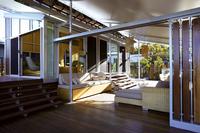
Paul Uhlmann Architects has responded to a sensitive beachside lot with a delicate, tent-like residence that embodies a holiday essence.
However unlikely it seems, you could leave this house in the morning, return in the evening and find it gone.
Sitting 100 metres from the beach in the New South Wales coastal haven of Byron Bay, the house is subject to local council stipulations that it can be removed within 12 hours, should the ocean tide come within 50 metres of its boundary.
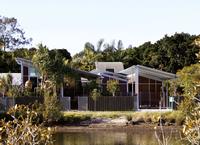
As principal Paul Uhlmann explains: "Council determines where it thinks the ocean might end up in 50 or 100 years. Our client’s block was deemed to be in the worst potential erosion zone, so the house had to be demountable."
Rather than being built as a single structure, the house had to be separated into three sections, or ‘pods’. "Each one is on a self-supporting steel frame so you can unbolt them, put them on the back of a 4x4 truck and tow them away," Uhlmann says.
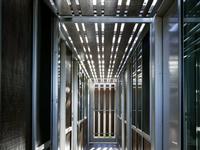
The pods’ transportability would be welcome if Byron Bay was to come under threat from cyclones, as it was in 1939 and 1954.
A maximum of three pods could be built – each with a width limit of just four metres. Working with his colleagues, Uhlmann linked the mostly steel pods with more temporary materials to create a central ‘outdoor’ space and larger whole. Extensive elevated timber decking connects the pods at floor level, while a giant sail roof creates a new living space by enclosing the deck area.
As well as providing shelter to the deck, the sail roof hovers above the pods’ LYSAGHT CUSTOM ORB® roofs made from COLORBOND® Metallic steel in the colour Citi®.
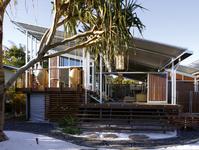
To withstand the brackish coastal conditions, galvanised 100 x 100mm hollow section steel was chosen to form the pod skeletons and sail frames. The frames are bolted into stainless steel columns, or "stumps", set in concrete footings.
A conscious decision was made to express the building’s vertical steel structure, which combines a commercial window framing system with a glass and customised wood panel system.
The glorious fabric sail roof – which conveys a sense that the home could, at any moment, set sail for the horizon – also owes its form to galvanised 100 x 100 SHS.
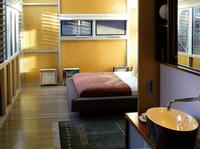
Uhlmann says the frame could not have been efficiently realised in a material other than steel. "Making the loading and deflection calculations for the fabric structures was quite an in-depth process, and steel ideally met those requirements when other materials could not."
Uhlmann applied shipwright-like understanding to the structure to ensure it remained waterproof. "We had to carefully consider water movement and account for it both running and flying in," he says. Commercial-grade PVC vinyl is run through a yachting track at one end and then lashed tight to the rest of the structure.
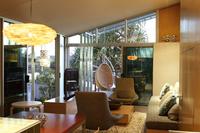
Paul Uhlmann Architects has admirably achieved its goal of creating a stripped-back tent-like home that connects harmoniously with its surrounds and evokes a holiday essence: the house feels more like a tethered yacht than fixed abode.
Uhlmann flags the house’s ‘outdoor’ ambience as his favourite feature. "There’s tranquility in the space that is quite special to me. You sit there and that sense of holiday is noticeably present. We’re really proud to have instilled the house with that feeling."
Byron Bay, New South Wales
ARCHITECT
Paul Uhlmann Architects